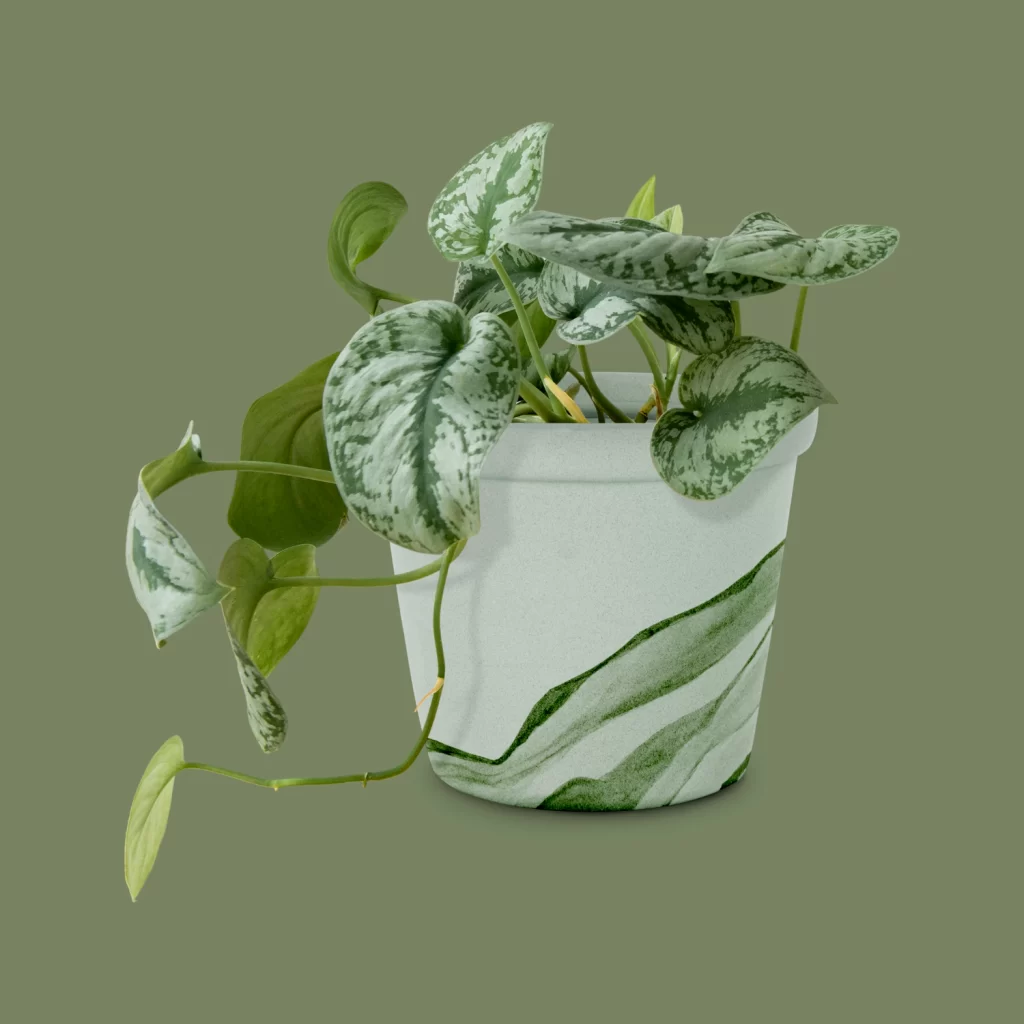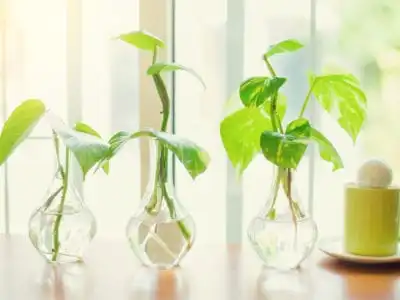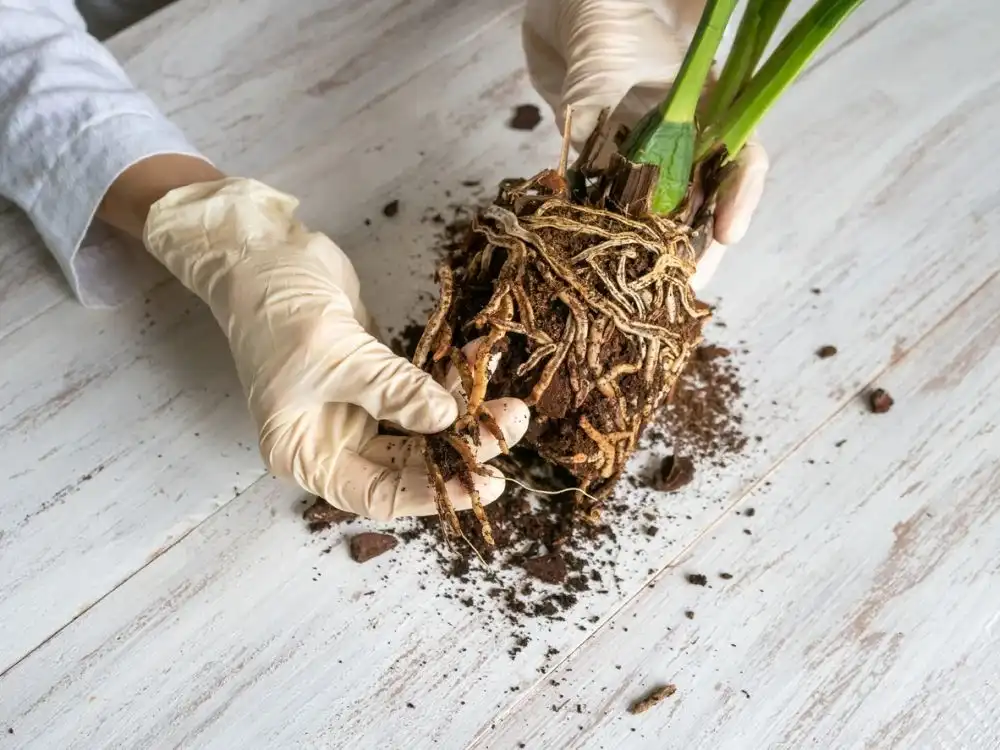Are you an indoor gardener planning to propagate Pothos? Then the next stage comes is How you would reproduce Pothos. No doubt! Pothos is one of the easiest plants to propagate. With its beautifying nature, heart-shaped leaves, ability to survive and develop in almost any condition, low maintenance, and low monitoring, Pothos plants have become the first and best choice for indoor gardeners. On this page, there will be a detailed demonstration of everything you need to know about propagating Pothos, including different methods to reproduce Pothos, a step-by-step guide to growing Pothos plants, the benefits behind breeding them instead of purchasing, common pitfalls to avoid, and warning tips.
Let’s dive into the magic of pothos propagation and its techniques!
Unveiling the Mystery of the Pothos Plant
Pothos is a popular houseplant. Also known as ‘Devil’s Ivy’ or Epipremnum aureum, it’s easy to grow in hanging baskets, pots, and planters. Plants native to China and Southern Asia, these tropical plants are known for their low maintenance and ability to develop in a different environment. Pothos ivy houseplants have long, trailing stems reaching 20-40 feet (6-12 meters) in length and 3-6 feet (~1-2 meters) in width, heart-shaped glossy leaves. However initially, the new growth is bright green, but as it matures, it becomes deeper green.
One of the best things about Pothos plants is that they are low maintenance and require inadequate monitoring. They survive in various conditions, including low light, bright indirect light. Pothos plants also do well in different soil types, making them ideal for beginner gardeners.

Multiply Your Pothos Collection
Pothos (Epipremnum aureum) plants can be propagated and transformed into new plants that flourish in your indoor garden. There are several benefits to propagating Pothos ivy houseplants, including:
Cost-effective
You can spend a lot of money on a pothos plant, especially if you want to purchase a large one. Propagating pothos is a cost-effective way to get more plants, and you will have a good return on your investment (ROI).
Healthy plants
Plant pothos from healthy rootstock when you propagate. Plants that are newly planted have less chance of getting pests or diseases, saving you time and money.
Easy to relocate
Are you thinking about moving to a new place? Propagating Pothos is a great choice. Instead of purchasing the new one, you can relocate the old one or propagate the further bank of Pothos plants from the old one. If you’re propagating Pothos ivy houseplants, it’s a great way to share your love of plants with friends and family. You can give them as gifts to your beloved ones.
Maintain the plant’s health.
Propagating pothos (Epipremnum aureum) can help maintain the health of the mother plant. When a pothos plant matures enough, it can start to lose its leaves and become less healthy, increasing the chances of getting infected by pets and disease. You can prune the plant back to a manageable size and encourage new growth by propagating it.

Multiply Your Pothos Collection with These Propagation Techniques!
There are several methods of propagating Pothos ivy houseplants, including hydro or water propagation (bearing plants without soil, in a water culture (hydro-phonic)), soil propagation (propagating plants in soil or ground), and air layering (propagating plants in air-culture, without soil). Each method has its benefits and dark aspects, and the one you choose will depend on your preferences and available resources.
Pothos (Epipremnum aureum), also known as Devil’s Ivy, is a popular and easy-care-for houseplant. However, it requires proper reporting, documentation, care, and monitoring when propagating immature or planting pothos plants from the parent plant.
However, propagating Pothos is a straightforward procedure, and there are a few different methods you can use depending on the seasons:
Water Propagation
The favorable time to propagate Pothos using water propagation is during the growing season, which typically spans spring and summer. During this period, the plant is successfully producing new growth, which will increase your cuttings’ success rate. It’s generally recommended to take cuttings around 4-6 inches 4-6 inches (10 cm-15 cm) long, with 3-4 nodes, with a few leaves on each cutting.
Propagating in Moss
Moss propagation, also called sphagnum moss propagation, is ideal for sensitive plants with delicate roots. However, the production time for moss propagation is during the plant’s growing season, which typically occurs in the spring and summer. During this time, the plants are actively producing new growth, which increases the chances of successful propagation.
Soil Propagation
Soil propagation can be done throughout the year, but similar to water propagation, it tends to have a higher success rate during the plant’s growing season (spring and summer). The plant is better equipped to establish new roots and thrive during this time.
Air Propagation
Air layering is a method of propagating Pothos (Epipremnum aureum) that involves creating a new plant while the cutting is still attached to the parent plant. However, the recommended time for air propagation (air layering) is also during the plant’s growing season, which is usually in spring or early summer. Again, during this period, the plant’s natural growth processes are more progressive, and it is more likely to produce roots in response to the air layering technique.
Discover the Tools and Materials You Need to Cultivate Pothos
| Water propagation | Soil propagation | Moss propagation | Air propagation (Air Layering). |
| Healthy/mature pothos plant | Mature pothos plant | pothos plant | Healthy/mature pothos plant |
| Clean and sharp scissors/pruning shears | Clean and sharp scissors/pruning shears | Clean and sharp scissors/pruning shears | Clean and sharp knife or pruner |
| Clean the container with water and fill it with clean water | Small pots with drainage holes | Sphagnum moss | Sphagnum moss |
| Optional: Rooting hormone (for faster rooting) | Well-drained pot with good fertile soil ph | Plastic wrap | Plastic wrap |
| Temperature should be warm, away from direct sun | Optional: Rooting hormone (for faster rooting) | Ensure the moss is securely tied with twine or twist ties | Ensure the moss is securely tied with twine or twist ties |
Dive into the Magic of Water Propagation
Water propagation is one of the most popular methods of propagating Pothos (Epipremnum aureum). It involves rooting the cuttings in water until they develop roots and can be planted in the soil after some time.
Here’s how you can propagate Pothos in water by following a straightforward procedure:
- Take a cutting from the mother plant that is at least 4-6 inches (10 cm-15 cm) long and has at least 3-4 nodes.
- After removing the bottom leaves, only one or two leaves should remain at the top of the cutting.
- Place the cutting in a glass jar containing clean water, ensuring the bottom node is submerged.
- Place the glass jar in bright, indirect light and change the water every few days.
- After a few weeks, the cutting should produce healthy roots. Once the roots are at least 2-3 inches (5-7 cm) long, then it’s now mature enough to plant them in the soil.

Unlocking Pothos Propagation Secrets in a Soil Wonderland!
Soil propagation involves rooting the cuttings directly into the soil. This method is best for those who want to skip the step of transferring cuttings from water to mud.
Here’s how you can propagate Pothos in soil by following a straightforward procedure:
- Take a cutting from the mother plant that is at least 6 inches long and has at least 3-4 nodes.
- After removing the bottom leaves, only one or two leaves should remain at the top of the cutting.
- Dip the bottom of the cutting in the rooting hormone. However, this is optional.
- A pot full of well-draining soil should be used for planting the cutting, with the bottom node covered with mud.
- Water the cutting and place it in bright, indirect light.

How to Propagate Pothos ivy houseplants with Moss Propagation?
Moss propagation, also known as sphagnum moss propagation [1]Propagate Pothos Plant using Moss technique Read, is an approach used for propagating certain plants, especially those with sensitive roots. The moss helps retain moisture around the cutting, creating a favorable environment for root development.
Here’s how you can propagate Pothos in moss by following a straightforward procedure:
- Take healthy Pothos cut with a few leaves, almost 4-6 inches (10 cm-15 cm) long, and have at least 3-4 nodes.
- Remove the bottom leaves from the cutting part, leaving only one or two leaves at the top.
- Moisten sphagnum moss and wrap it around the cutting. Let it soak in water for up to 20-30 minutes.
- Secure the moss with plastic wrap.
- Please put it in a warm, bright place in indirect light.
- Maintain the humidity by misting.
- Check for root growth in a few weeks.
- Plant them in the soil once the roots are well matured, up to 2-3 inches (5-7 cm) long.

Air Layering Magic: Revealing Pothos Propagation Secrets in an Enchanted Air Utopia!
Air propagation, also known as air layering, is a technique that encourages roots to form on a section of the parent plant while it is still attached. It allows you to create a new plant with well-developed roots before cutting it off from the parent.
However, this approach requires more skill and patience but can produce a larger plant with a more established root system.
Here’s how you can propagate Pothos in air culture by following a straightforward procedure:
- Choose a healthy stem at least 10-12 inches (25-30 cm) long with no leaves for the first 6 inches.
- Using a sharp knife, make a 1-inch (2.54 cm) cut just below the node in the stem.
- Wrap moist sphagnum moss around the cut and cover it with plastic wrap.
- Wait for the roots to develop, which can take a few weeks or months.
- Once the roots are at least 2-3 inches (5-7 cm) long, cut the stem below the new root system and plant it in well-drained soil.

From Cuttings to Roots: Exploring Methods, Pros, and Cons for Pothos Propagation
| Pothos propagation techniques | Benefits | Drawbacks |
| Water propagates. | – Easy and beginner-friendly method. | – It takes more time for roots to grow. |
| – Notice and document root growth in the water. | – Fragile roots may be damaged during transfer to a pot. | |
| – No need for additional growing medium. | ||
| Soil propagation | – Better root support during initial growth. | – Higher risk of overwatering and root rot. |
| – Easy transfer to the soil after root development. | – Roots may be damaged during transplantation. | |
| Moss propagation | – Maintain high humidity around the cutting. | – Requires extra materials (moss and wrap). |
| – Have a faster root success rate. | – Difficult to monitor root progress. | |
| – Suitable for sensitive roots. | – In moist conditions, the possibility of mold or rot exists. | |
| Air propagation (Air layering) | – Allows root development before detachment. | – A more complex and time-consuming method. |
| – Higher production rate for hard-rooted plants. | – Requires precise cutting and wrapping. | |
| – Easy to transplant into a new container once rooted. |
Pothos Propagation Gone Wrong? Stay Aware of These Pitfalls!
These plants require consistent watering but must also dry out between waterings. However, observing the cause of overwatering and underwatering can help you adjust your watering frequency. Propagating Pothos ivy houseplants [2]Global Green Pothos, Propagation, Care, and Diseases Read is a straightforward procedure, but a few common mistakes can be made. Avoid these mistakes to ensure successful propagation:
Overwatering
Overwatering can cause the cutting to rot before it can develop roots. Ensure to only water the cutting when the soil or water is dry. However, there are several ways to do this, including using a moisture meter, sticking your finger in the soil, or lifting the pot.
Underwater
Underwatering can cause the cutting to dry out and die. When you overwater Pothos plants, the soil becomes soggy, and the roots can start to rot. However, under-watering can cause the leaves to wilt and eventually fall off. Therefore, ensure to water the cutting regularly and moisten the soil or water.
Read: Pothos Watering Guide: Mastering the Art for Thriving Greenery

Unlock the Key Tips for Green Growth Of Pothos Propagation!
Follow these straightforward tips to ensure successful Pothos propagation:
Choose a mature/healthy parent plant.
Cuttings from a healthy parent plant will more likely develop roots as they grow.
Use the rooting hormone.
Using rooting hormones can help speed up the rooting process and increase the likelihood of successful propagation.
Keep the cut warm.
Pothos ivy houseplants prefer warm temperatures, so keep the cuttings in a warm room.
Patience is the key.
Propagation can take time, so be patient and don’t give up if your cuttings don’t immediately develop roots.
Read: Neon Pothos Propagation, Care, Benefits, and Problems
Checklist For Pothos Propagation Mistakes
Even with the best care, problems can still arise when propagating Pothos ivy houseplants [3] Does Pothos leave turning yellow? 10+ Reasons and Solutions Read. However, Here are some checklists to notice and fix them:
Rotting- If the cutting is rotting, remove it from the soil or water and cut off the rotting part. Let the cutting dry out for a few days before replanting it.
Loss of Rigidity- If the cutting is wilting, it may be underwater. Make sure to water the cutting and keep the soil or water moist.
No roots- If the cutting has not developed in the expected time, try moving it to a warmer location or using rooting hormones.
Read: Does Pothos leave turning yellow? 10+ Reasons and Solutions
Happy Propagating: Conquer Pothos Propagation with Confidence!
Having a pothos plant (Epipremnum aureum) means growing beautiful greenery and beautifying your indoor interior all year round. The process is relatively straightforward whether you use water propagation, moss propagation, soil propagation, or air layering. Indoor and outdoor gardeners of all skill levels can do it. However, to cut the story short, following the tips and step-by-step procedure and checklists outlined in this blog, you can successfully propagate Pothos ivy houseplants and add beauty to your home, office interior, workspace, or garden.



